Events
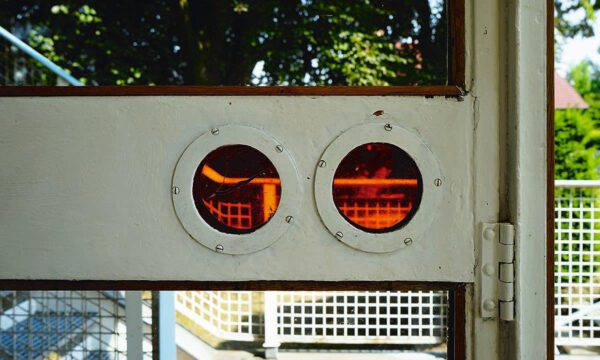
© Jamrozik/Kempster, VG Bildkunst, Bonn
Thursday, November 18th, 2021, 7 p.m.:
Digital lecture as part of our special exhibition: “Kinder der Moderne – Growing up Modern”
Julia Jamrozik and Coryn Kempster, the curators of the current exhibition at the Weissenhofwerkstatt, will discuss the oral history research project which documents the memories of children who were the first inhabitants of some of the most iconic Modernist buildings: the J.J.P. Oud row house at the Weissenhofsiedlung, the Mies van der Rohe Tugendhat House, the Schminke House by Hans Scharoun and Le Corbusier’s Unité d’Habitation in Marseille. Sharing their contemporary photographs as well as fragments of recollections from former inhabitants, the lecture expands on the materials displayed in the exhibition and provides intimate narratives of Modernism in architecture.
Greetings and introduction: Anja Krämer, head of the Weissenhofmuseum
The lecture will be held in English and last 45 minutes. After that there is still time for questions.
Zoom-Link:
https://us02web.zoom.us/j/85385776469?pwd=aGhrYXY2MGZxWEtONmVKMXBHcUVnZz09
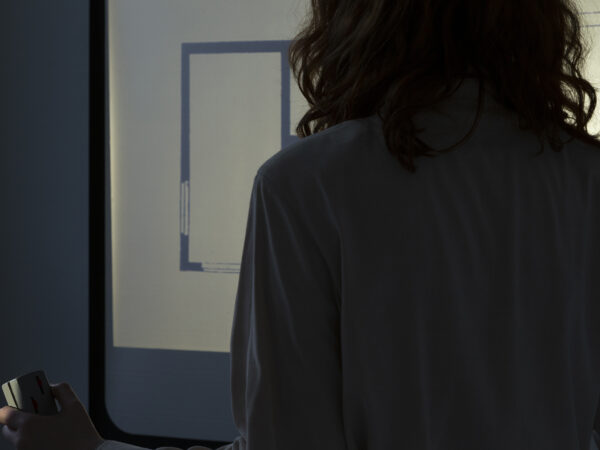
© Julia Schäfer, Ann-Kathrin Müller, VG Bild-Kunst, Bonn 2021
Extended until 17th of October 2021 — As part of the CURRENT Festival Stuttgart and on behalf of the Friends of the Weissenhofsiedlung e.V., the temporary installation brāhha by Ann-Kathrin Müller and Julia Schäfer will be on view on Bruckmannweg 10 in the Stuttgart Weissenhofsiedlung from September 11th to 19th, 2021.
The installation is freely accessible round the clock. If you want to listen to the texts without visiting the installation, you can call on telephone number 0711-25 29 95 01 free of charge.
brāhha is an inspection in eleven text miniatures about the fallow land and what thrives from it, about geological layers and the history of time. Via walkways, visitors are led to the overgrown property at Bruckmannweg 10 in the Weissenhof Estate and are guided through an audio walk using their own mobile phone. It contains the remains of the building by the Stuttgart architect Richard Döcker, which was destroyed in the Second World War. brāhha reflects on the effects of the war on the European (urban) landscape from a feminist perspective.
The word brāhha derives from the Old High German and means breaking up, the first plowing of the field.
The research-based project by the artists Ann-Kathrin Müller and Julia Schäfer will be realized together with the author Judith Engel, the industrial designer team anima ona and the graphic designer Maximilian Haslauer and Alina Derya Yakaboylu.
Opening:
September 10th, 2021, 7–10 p.m.
Bruckmannweg 10, Weissenhofsiedlung
Greetings and introduction: Suse Kletzin, chairperson Freunde der Weissenhofsiedlung e.V.
A herbal ice tea with herbs from the field Bruckmannweg 10 is served, made by the ceramic and tea specialist Lena Grasler.
No registration is required.
Accompanying program:
September 12th, 2021, 8 p.m.:
On the Open Monument Day, the installation will be accompanied by a film program in the Atelier am Bollwerk in Stuttgart. On display are “N.N.” (FRG, 1969) by Ottomar Domnick and “Martha” (GDR, 1978) by Jürgen Böttcher. More information and tickets: https://arthaus-kino.de/filme/sonderprogramm/
September 14th, 2021, 6 p.m.:
The artists invite you to an architecture tour with the collection manager Vera Romeu in the Villa Domnick in Nürtingen. Tickets with prior registration: stiftung@domnick.de
In cooperation with:

Sponsored by:
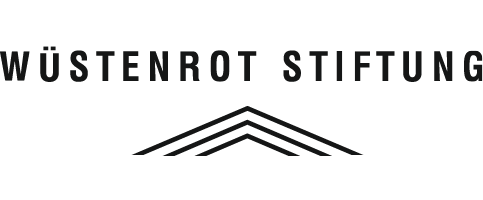


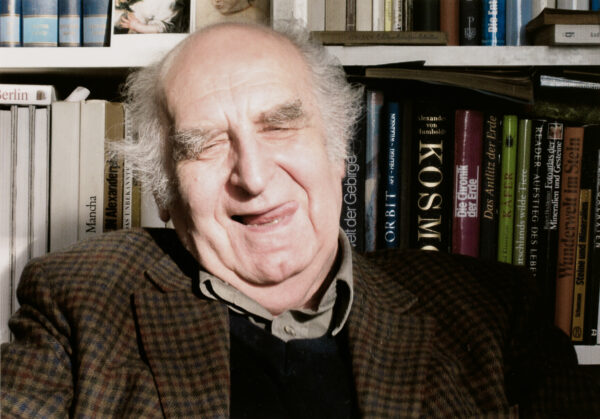
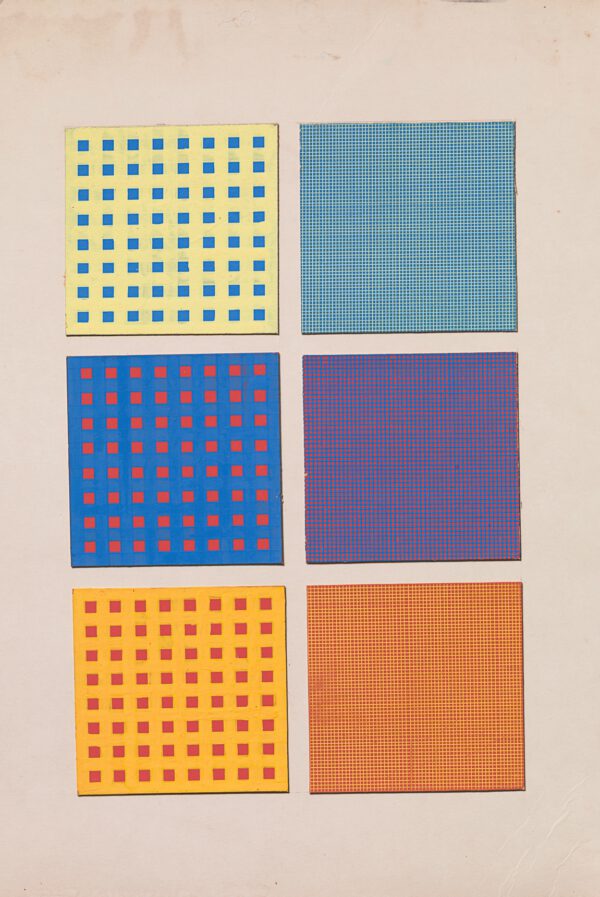
Fritz Seitz in his library, 2014 Sheet from the teaching on the subject of color
© Willi Baumeister Stiftung
Exhibition in the Weissenhofwerkstatt in the Mies van der Rohe House
Mai 1st to August 1st, 2021
Sat, Sun and Public Holidays 12 p.m. – 5 p.m.
Six people are allowed to stay in the exhibition at the same time. A medical mask must be worn and a distance of 1.5 meters must be maintained. Filling out a contact tracking form is required.
Fritz Seitz (1926-2017)
Artist, Professor, Graphic Designer, Scholar, and Consultant.
Fritz Seitz left us with his art, teaching, writings, and visual diary, which he called Chronolog, a body of work that can only be seen in its entirety and interconnectedness since his passing.
Born in Bad Kissingen, he studied at the Academy of Fine Arts in Stuttgart with Prof. Willi Baumeister. He was a notable voice in graphic design in the 1960s and 70s. From 1965-1992, he was a professor for foundation courses at the Academy of Fine Arts, Hamburg, and held numerous visiting positions in Germany and abroad. At the Academy of Fine Arts in Stuttgart, he taught color theory in the Productdesign Department for over twenty years.
Throughout his life, Fritz Seitz felt anchored and understood in Stuttgart.
The exhibition attempts to shed light on the interrelationships and the development of his thinking and making. Along the theme of Color, the connection between his creative fields is shown. His versatility to bridge between theory and professional practice, fine and allied arts, personal and published insights become perceptible.
Seitz’s works are supplemented by archival materials that refer to the academic linage of Willi Baumeister and Adolf Hölzel. All three taught and/or studied at the Stuttgart Academy. The neighboring Weissenhofsiedlung, built in 1927 and its color concepts are linked by both Baumeister and Seitz trough their work. Regardless of their individual significance, Hölzel – Baumeister – Seitz can be understood as a triad. Connected through their common content, they make a significant contribution to the teaching of Arts.
As a homage to the exhibition location, the often forgotten colourfulness of the Weissenhofsiedlung is presented in the exhibition and thus forms a point of reference for Seitz’s work on the subject of color.
Organizer:
Weissenhofmuseum in the Le Corbusier House
Archiv Willi Baumeister in the Kunstmuseum Stuttgart
Prof. Esther Hagenlocher, University of Oregon
Supported by:
Culture Office of the City of Stuttgart
Willi Baumeister Foundation
Friends of the Weissenhof Estate
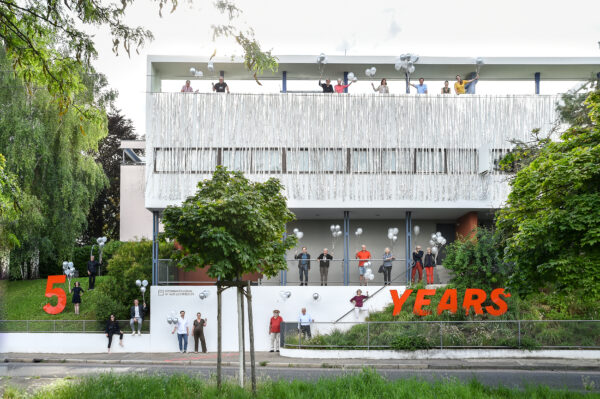
© Fernando Iannone / The Baukunst Dynamites
5 years UNESCO World Heritage Le Corbusier!
We are celebrating the five-year membership of the two Le Corbusier houses in the Weissenhof Estate Stuttgart as a UNESCO World Heritage Site! THE BAUKUNST DYNAMITES provided the Le Corbusier semi-detached houses with an installation especially for this purpose and the photographer Ferdinando Iannone took a great photo with our board members, club members, neighbors and friends.
We are also pleased that the Stuttgart Mayor of Construction Peter Pätzold and Friedemann Gschwind, the German expert on the team for the transnational UNESCO World Heritage application, are honoring the anniversary with their statement. You can see it on our YouTube channel under the following link:
https://youtu.be/cgMCB_h3U4M
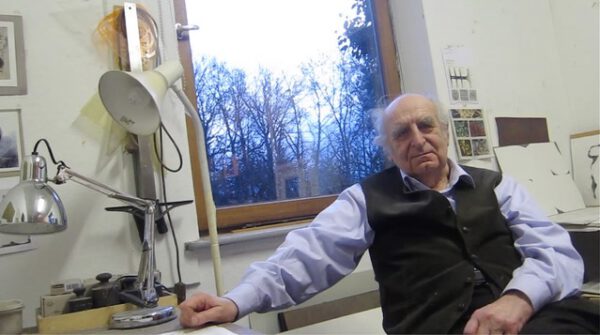
The artist Fritz Seitz (1926 – 2017) left us with his art, teaching and his writings a body of work that can only be seen in its entirety and interconnectedness since his passing.
Prof. Esther Hagenlocher (University of Oregon) knew Fritz Seitz in person and worked intensively on his oeuvre.
As part of our special exhibition “Fritz Seitz – Color Connections” in the Weissenhofwerkstatt, we hear at
Friday, July 2, 2021, 7 p.m.:
About preserving Fritz Seitz’ legacy by Prof. Esther Hagenlocher
A journey by Esther Hagenlocher from Stuttgart to Nusse to the “Alte Apotheke,” the former home of the artist Fritz Seitz – and back. The goal was to preserve, link it to figures, and make it accessible to a broader audience.
Fritz Seitz was a stately figure with flashing intellect, and the house was a quiet place. Yet, it came alive with the insights granted into his thoughts and the enormous subtlety of his work. Gradually, the fascinating interconnections within the house across the four floors became apparent.
The lecture will show how these connections were present in the life and work of Fritz Seitz and how these relationships require equal attention to his fine art and commercial practice. His way of thinking is neither conceptually nor stylistically driven; rather, his body of work prioritizes the performative potential of the materials, the design, and ultimately the everyday life to be acted out in it. Thus, Seitz’s works become something to be experienced.
Greetings and introduction: Anja Krämer (Weissenhofmuseum) und Hadwig Goez (Archiv Willi Baumeister)
After the lecture (about 45 minutes), Esther Hagenlocher will be happy to answer your questions.
The lecture will be take place on zoom.
Link: https://us02web.zoom.us/j/81080633437?pwd=MWUzenRiQU4rT3UxTlJmSkJ2ZEJSdz09
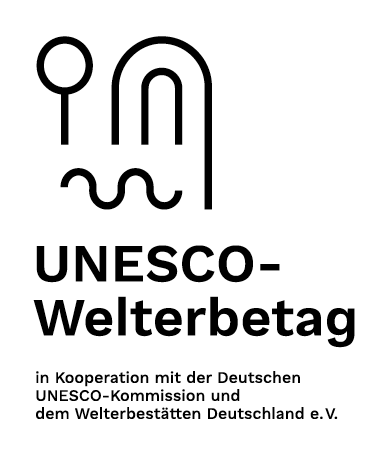
Under the motto “Solidarity and Dialogue”, the World Heritage Sites in Germany celebrate the UNESCO World Heritage Day. Due to the corona pandemic mostly digital again.
The website www.unesco-welterbetag.de offers a virtual tour of discovery and provides a look behind the scenes of the 46 world heritage sites in Germany.
The Le Corbusier semi-detached house as part of Le Corbusier’s complete architectural work is also represented. The team from the Weissenhofmuseum had shoot a short movie…let yourself be surprised and take a digital look.
On the page you will also find a photo campaign and a quiz.
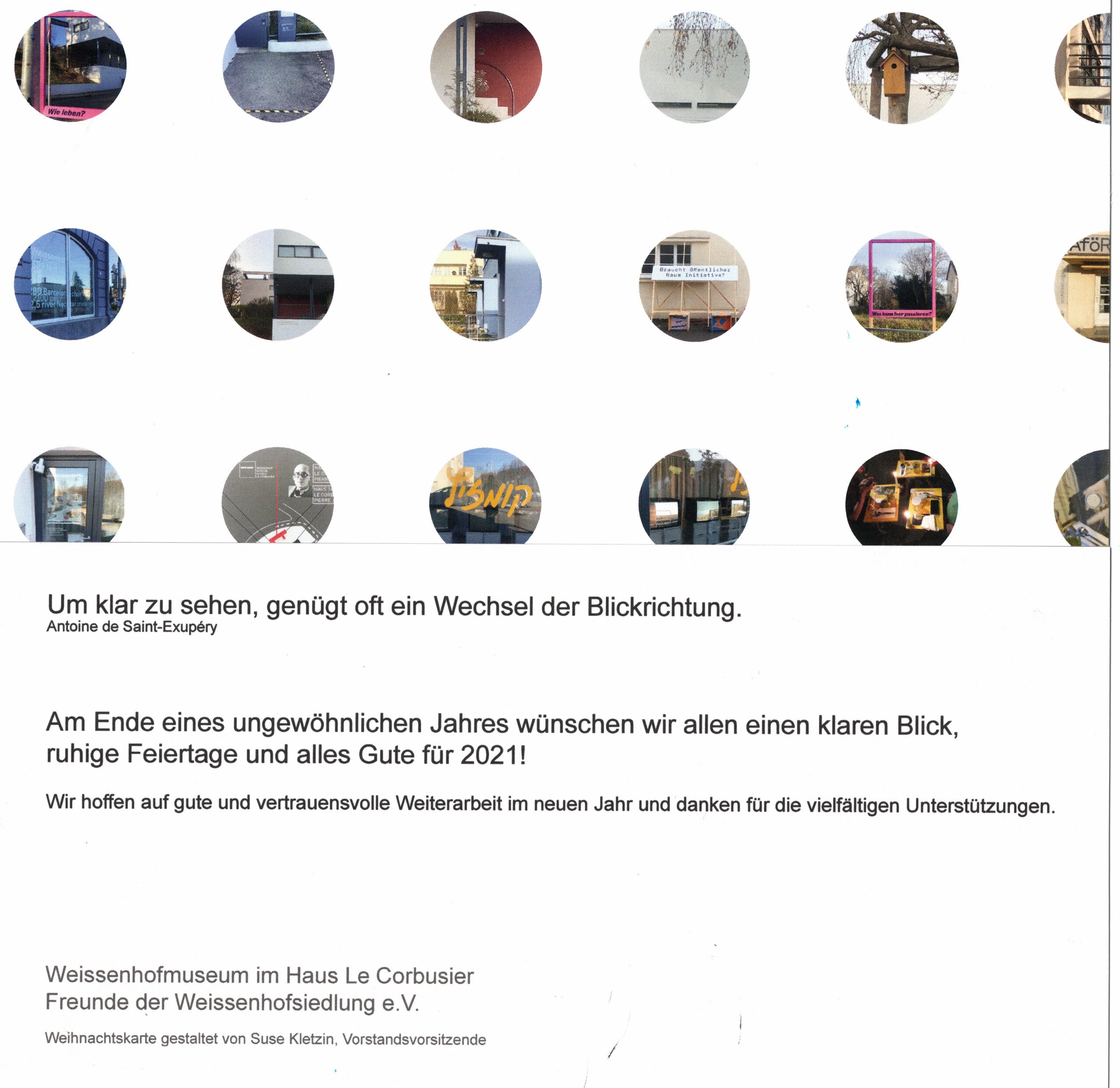
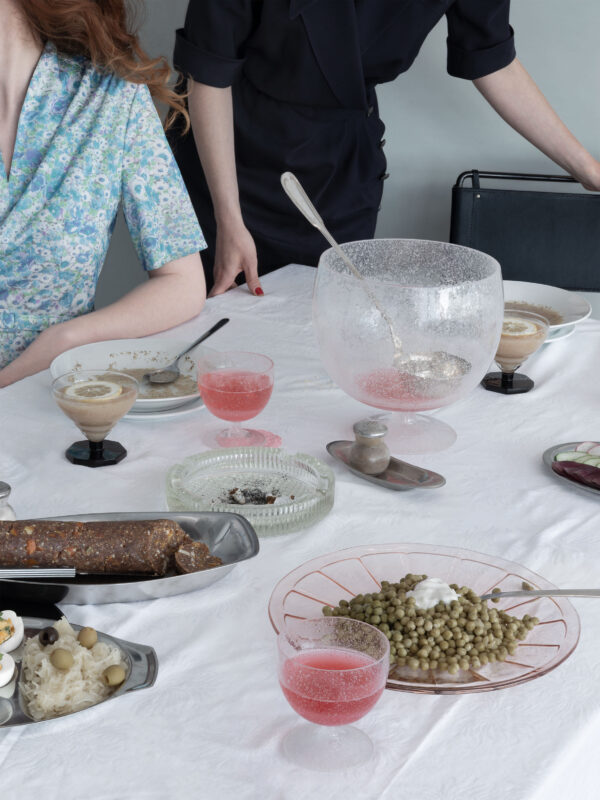
© Ann-Kathrin Müller & Julia Schäfer
Exhibition at the Weissenhofwerkstatt in the Mies van der Rohe House
September 12 to November 8, 2020
Ann-Kathrin Müller + Julia Schäfer
What Shall We Eat This Time? is an interdisciplinary, artistic research project that will be presented in the Weissenhofwerkstatt at the Weissenhof Estate in Stuttgart. Two cookbooks, Koch schnell und frisch für den Sommertisch (Fast and Fresh Summer Recipes, 1931) und How to Cook in Palestine (1936), were the starting point for this project. Both books were written by Erna Meyer, who in 1927 participated in the Werkbund exhibition The Dwelling in Stuttgart as the home-economics consultant and, due to the fact that she was Jewish, emigrated to Palestine in 1933. The political upheaval in two countries is revealed in the recipes. The formation and transformation of cultural identities through the process of cooking and eating is investigated and challenged in the exhibition.
During the exhibition the picture window of the Weissenhofwerkstatt will be the setting of a video installation that is visible from the outside. Using the form of a community kitchen, the artists Ann-Kathrin Müller and Julia Schäfer will invite the general public to participate in this process and to taste the dishes prepared at four scheduled sessions. The visitors will also be invited to participate in a discussion.
A series of posters that accompanies the sessions of the community kitchen will be available as an edition.
Exhibition opening:
Friday, September 11, 2020, at 7 p.m.
Forecourt of the Weissenhofwerkstatt in the Mies van der Rohe House
Am Weissenhof 20, 70191 Stuttgart
Mandatory registration (limited to 30 visitors) by September 10, 2020, at: info@whatshallweeatthistime.de
Additional information will be sent by e-mail following registration.
Speakers:
Prof. Barbara Traub, Jewish Religious Community of Württemberg [invited]
Suse Kletzin, chairperson of the Friends of the Weissenhof Estate
Anja Krämer, director of Weissenhof Museum
Accompanying program to the exhibition:
What shall we eat this Time_Accompanying program
![]()
![]()
![]()


Live cooking on Zoom:
Sunday, November 8th, 2020 at 5 p.m.
As part of our special exhibition What shall we eat this Time? there will be instead of the finissage a second live cooking on Sunday, November 8th, 2020.
The artists Ann-Kathrin Müller and Julia Schäfer will cook together with the participants a menu composition from Dr. Erna Meyer’s cookbooks “How to cook in Palestine” (Tel Aviv, 1936) and “Koch schnell und frisch für den Sommertisch” (Stuttgart, 1931).
The necessary ingredients for the three recipes can be found here; you can also choose to cook individual dishes:
dishes for live cooking, 08.11.20
Live cooking on zoom takes place under the following link:
https://zoom.us/j/98493201405
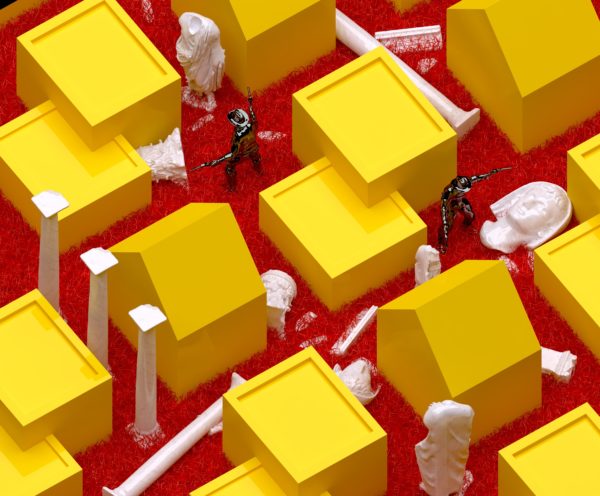
Due to the corona pandemic, the special exhibition “High Noon am Killesberg – Postmodern versus Modern” had to close abruptly from March 13th, 2020. In order to enable the students to round off their exhibition, we open the doors of the Weissenhof Werkstatt in the Mies van der Rohe house for a weekend.
In the early 1980s, the architectural movement of postmodernism gained worldwide attention and led to controversial discussions. In 1981 Jürgen Joedicke, the director of the Institute for the Foundations of Modern Architecture, organized an international symposium on the subject of architecture of the future, future of architecture. Well-known architects discussed their views of architecture. The aim was to take a critical look and to present approaches for future architecture.
In the exhibition designed by students of the Faculty of Architecture and Urban Planning at the University of Stuttgart, the showdown postmodern versus modern revives again!
The focus of the exhibition is on the comparison and analysis of the different attitudes of the architects for debate. Submitted sketches of ideas for critical handling of the Weißenhof estate are shown. In addition, projects in downtown Stuttgart are analyzed: the State Gallery as a masterpiece of postmodernity in Germany and the Kleine Schloßplatz, as a place that is associated with a lot of emotions for many people in Stuttgart.
Weissenhofwerkstatt in the House Mies van der Rohe
Am Weissenhof 20, 70191 Stuttgart
The opening hours of the exhibition are Saturday and Sunday, June 6th & 7th, 2020, from 12 a.m. to 5 p.m.
The usual corona regulations apply, wearing a mask and the minimum distance are required.
Admission is free.
